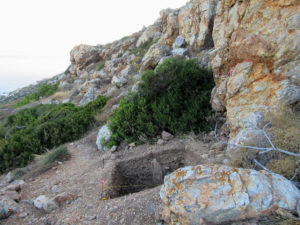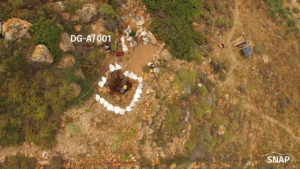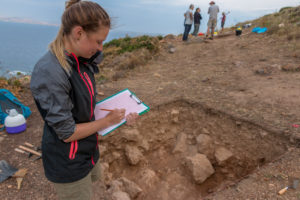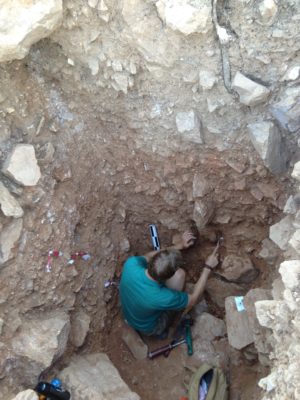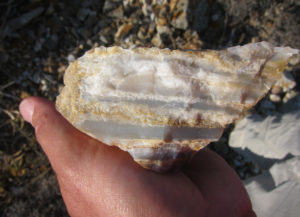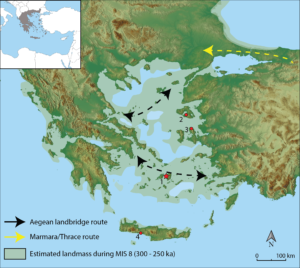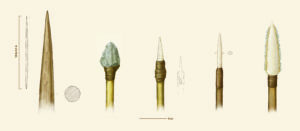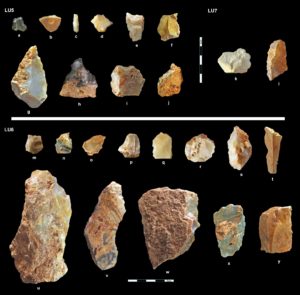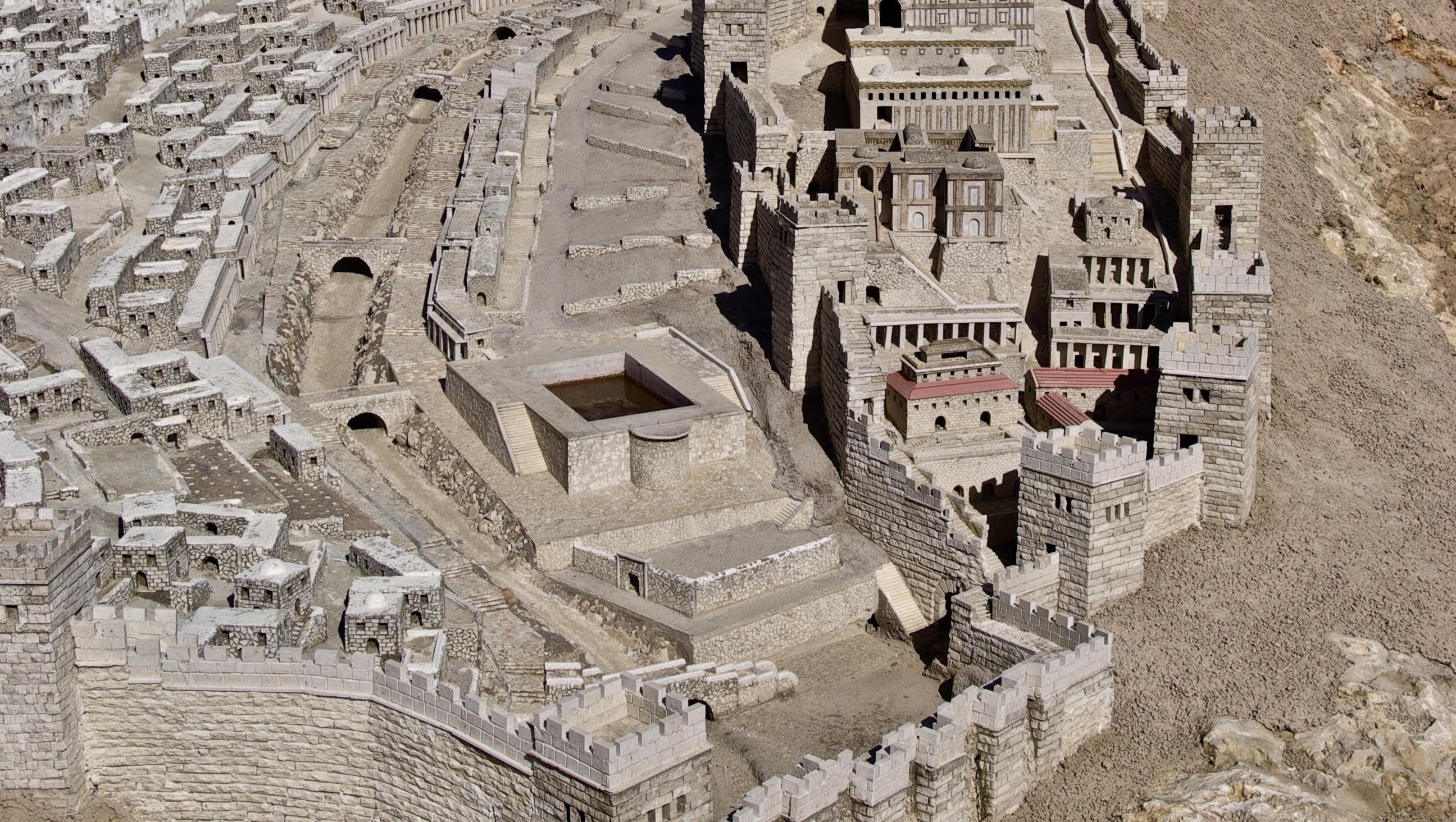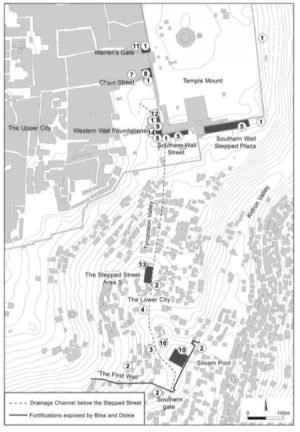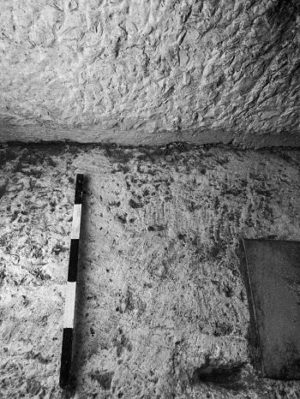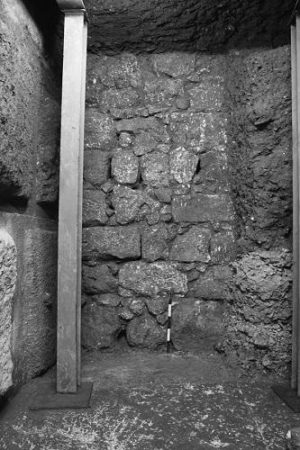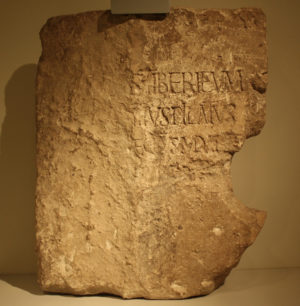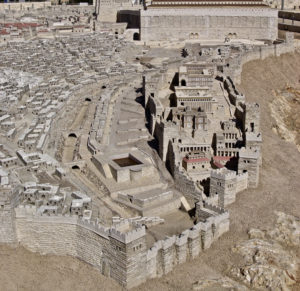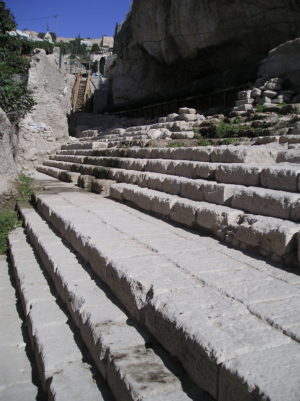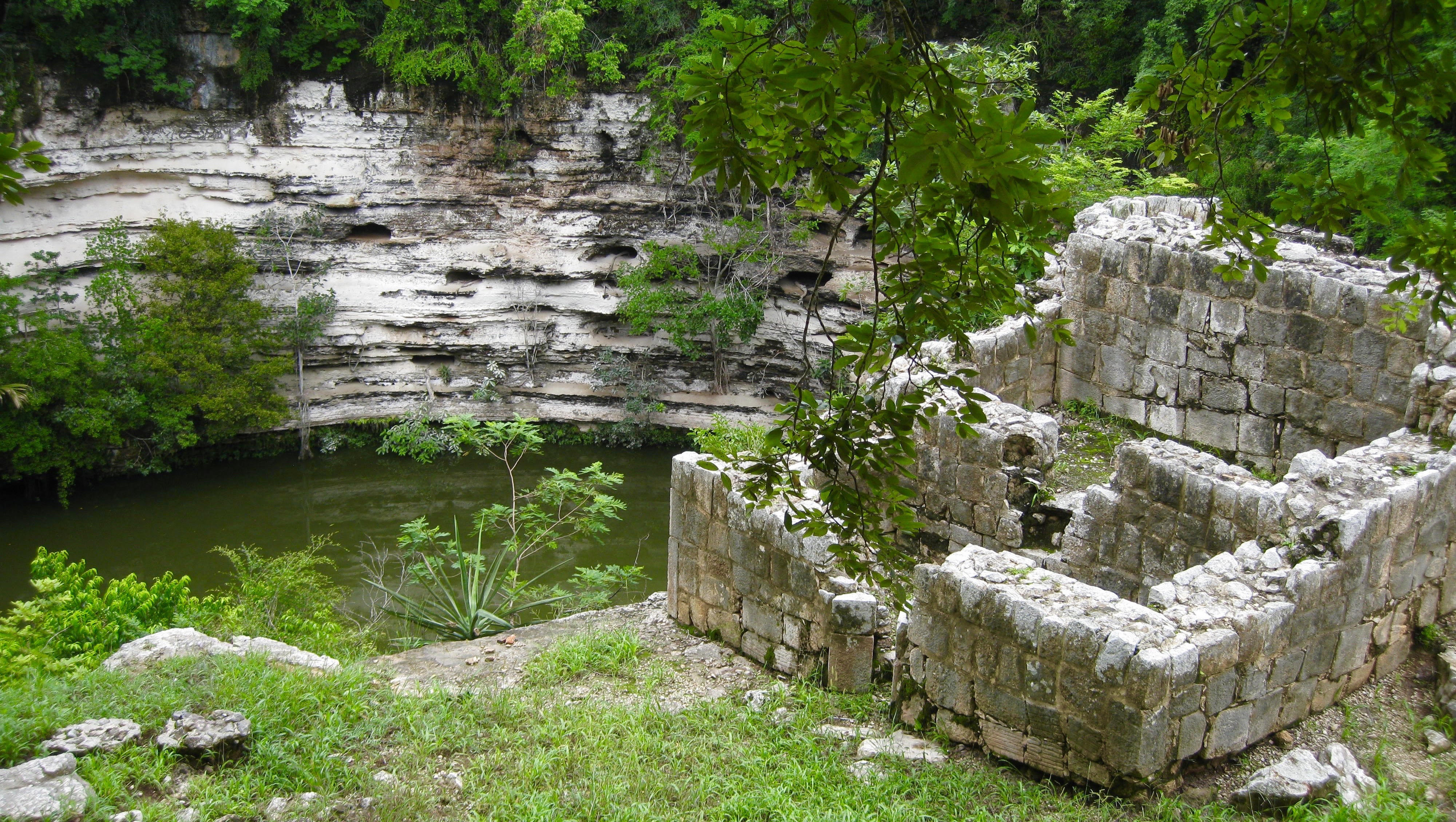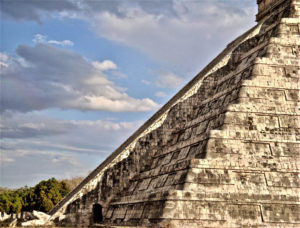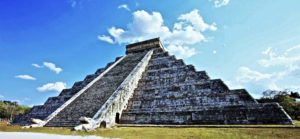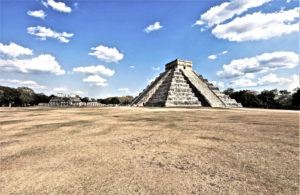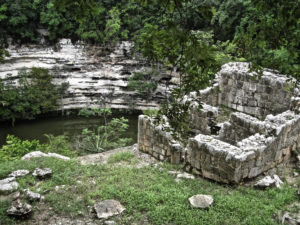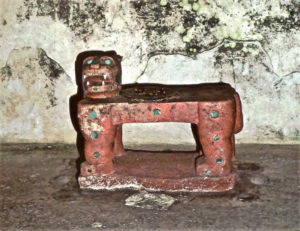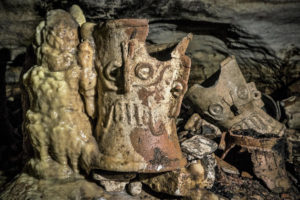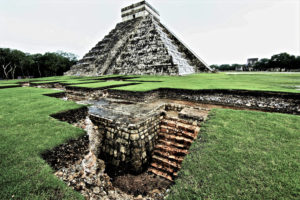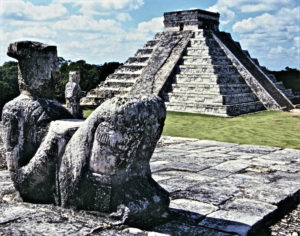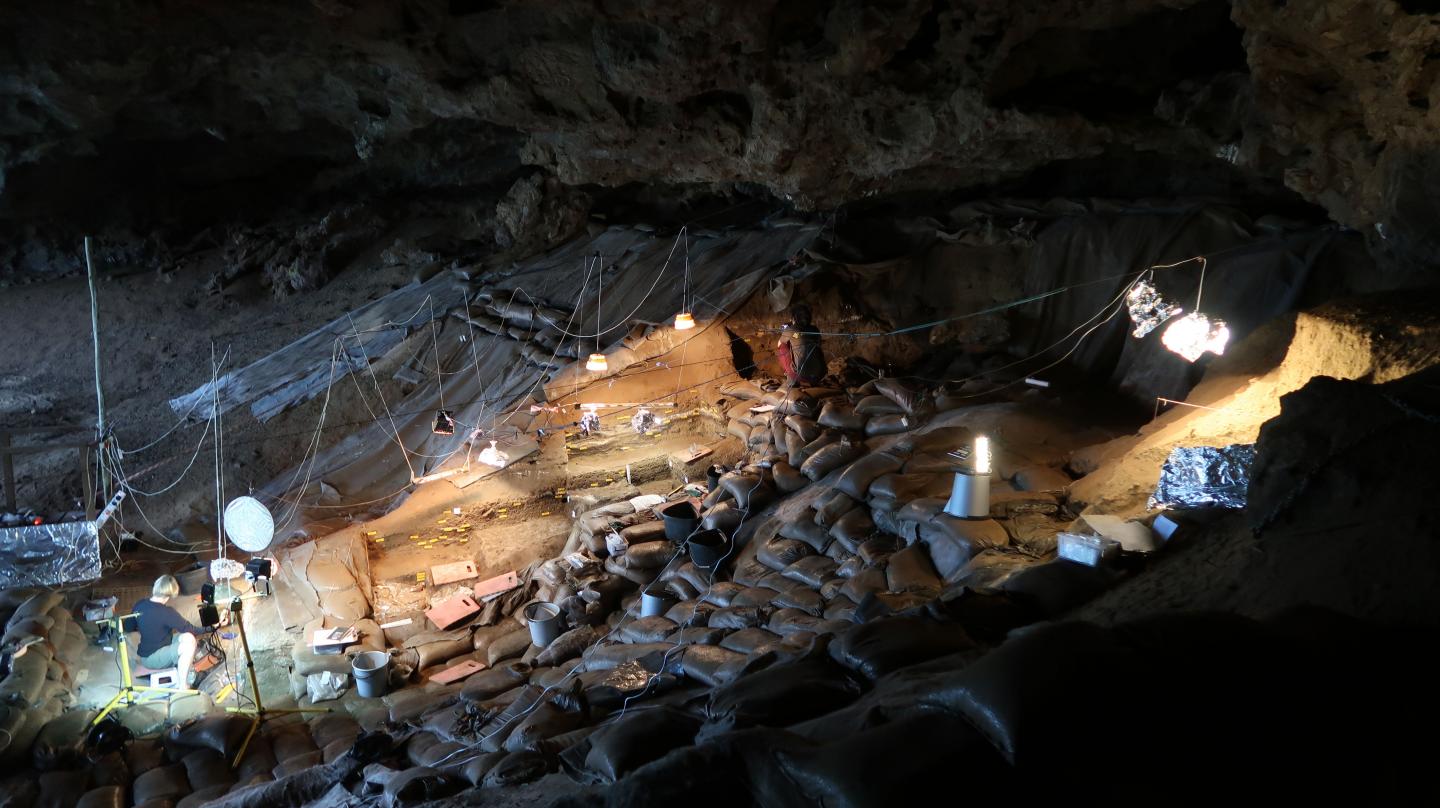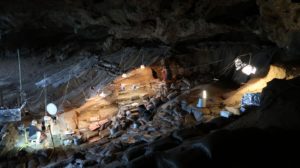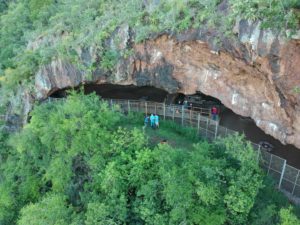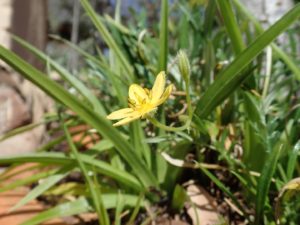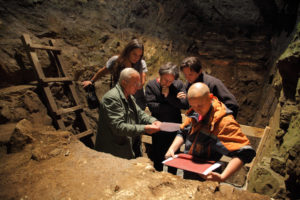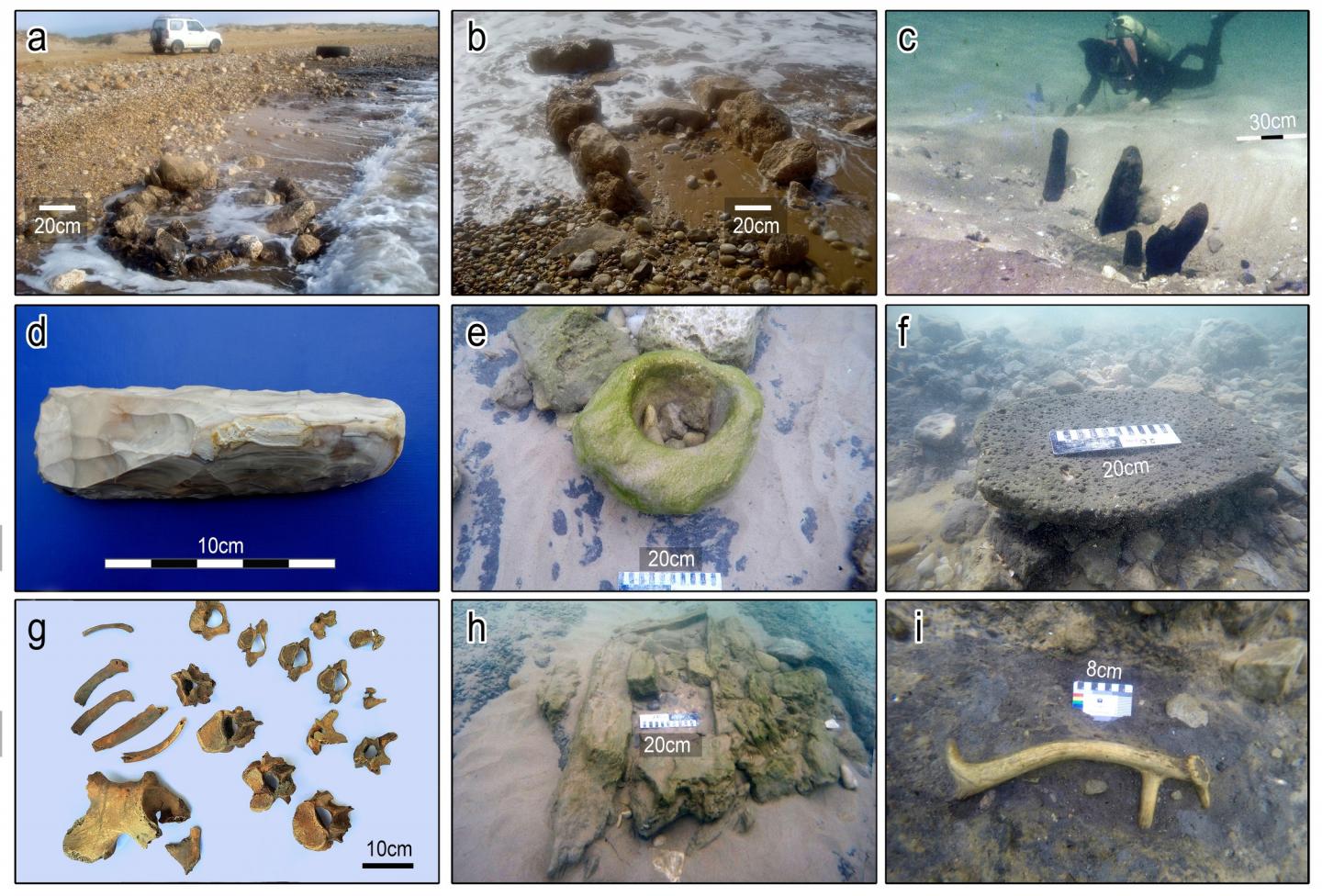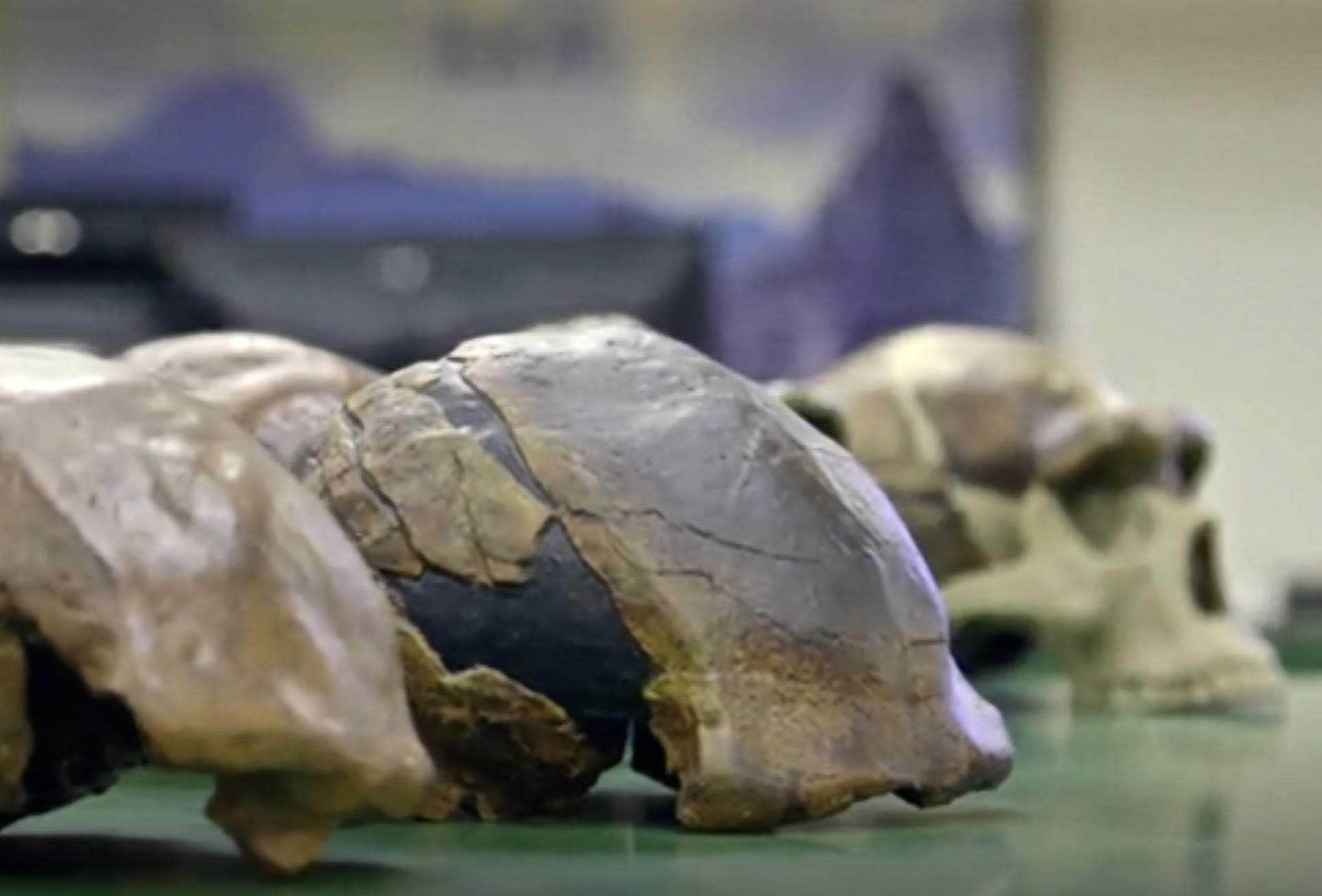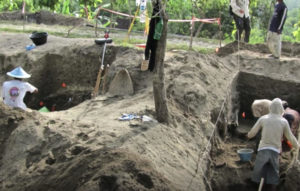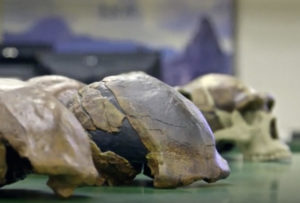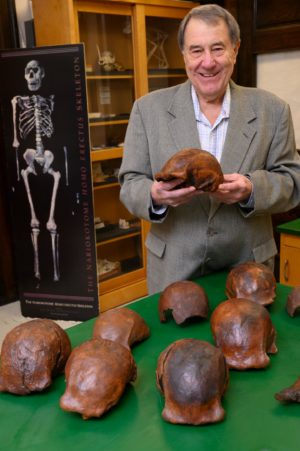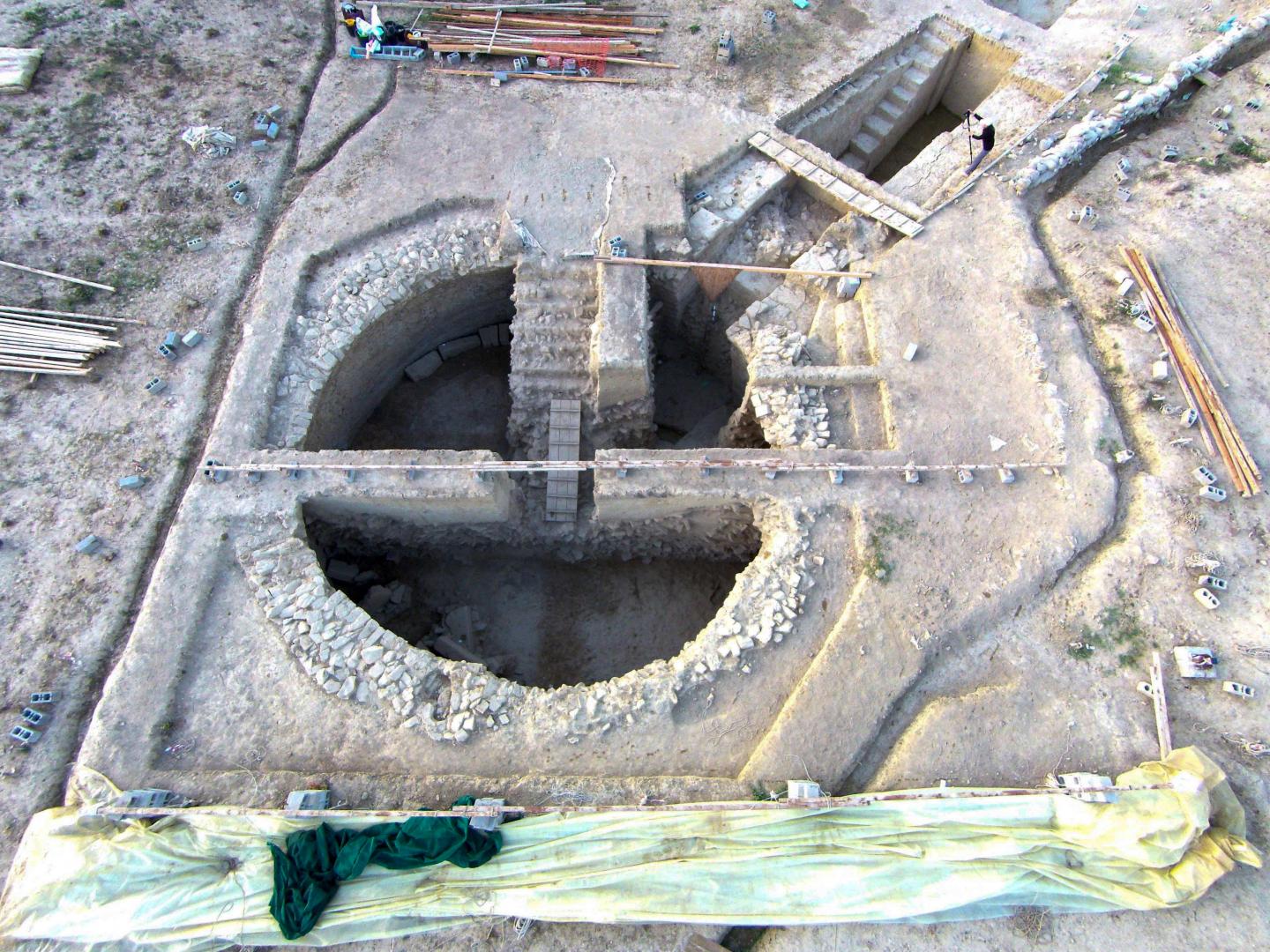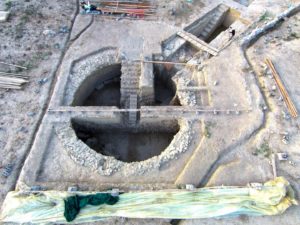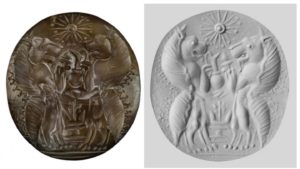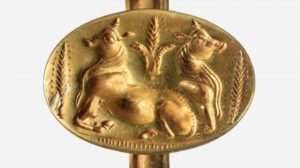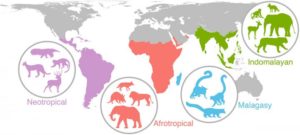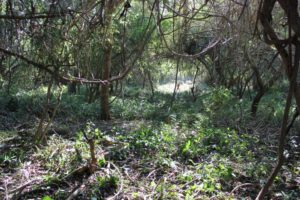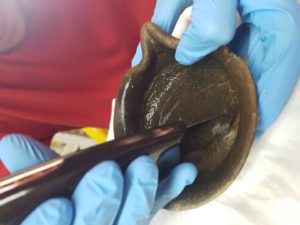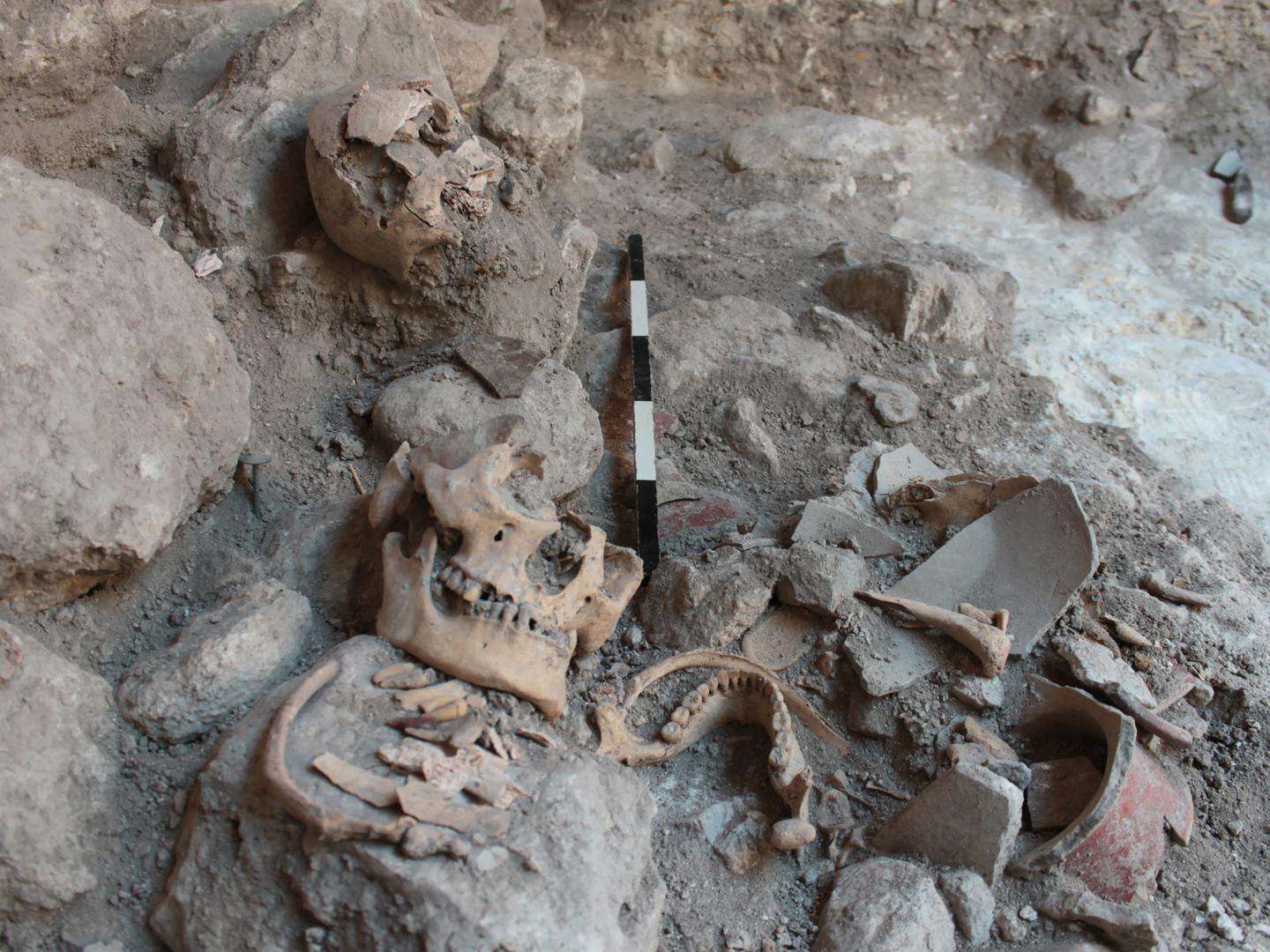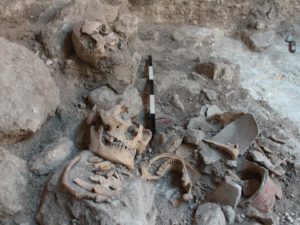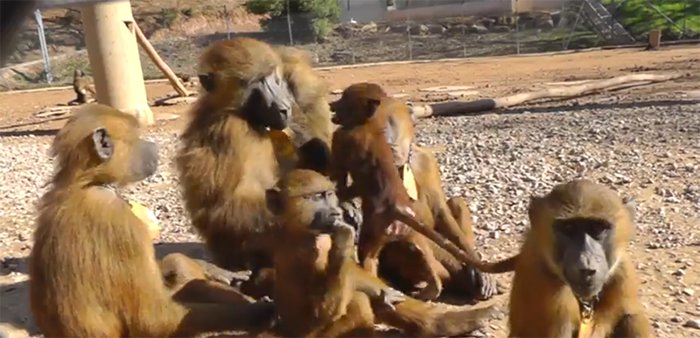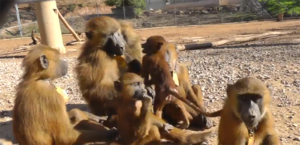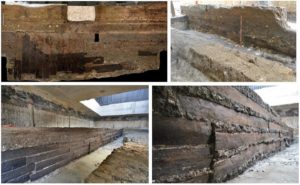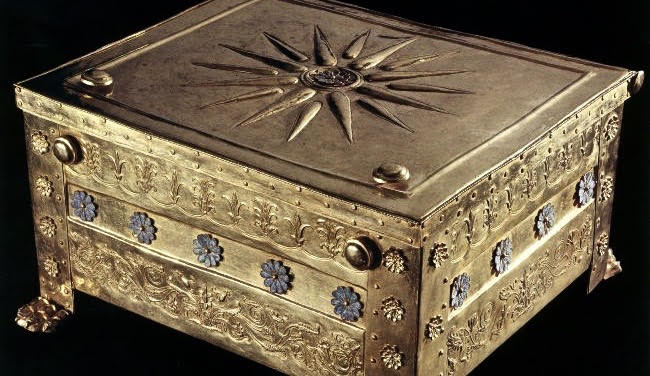
There are few archaeological sites so steep in controversy as Vergina in northern Greece; perhaps with the exception of ‘Troy’ where Heinrich Schliemann spirited away ‘Priam’s treasure’ from Turkish authorities, and Howard Carter’s bureaucracy-hampered digs in the Valley of the Kings. But the politicking at Vergina has been altogether subtler and more enduring.
Forty years ago, on 8 November 1977, Manolis Andronikos was lowered through the vaulted roof of a ‘Macedonian-style’ tomb, after the keystone had been removed in a reenactment of the favored entry technique of tomb robbers of old. Priests, press and politicians amassed at the archaeological site, set in the rolling countryside backdropped by the Pierian Hills. Word had spread that a newly-unearthed tomb appeared to be intact. Andronikos was tasked to lead excavations at the site under the auspices of the Aristotle University of Thessaloniki. Optimism at finding an intact burial chamber was suppressed by the knowledge that fifty of the fifty-one tombs already discovered in the region had been robbed long ago. But what Andronikos witnessed that day was quickly dubbed the ‘archaeological find of the century.’ His momentarily conflicted emotions of the ‘scientist’s elation’ with the ‘desecrator’s guilt’ was quickly cast aside when it became clear he had finally identified the long-lost city Aegae, the first capital of Macedon and the burial ground of its kings.
_____________________________
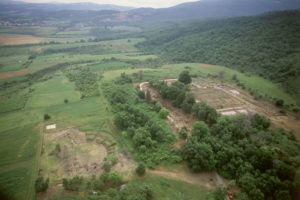
The ruins of the palace and theatre at Aegae in the early 1980s. Grant (2019), color plate.
_____________________________
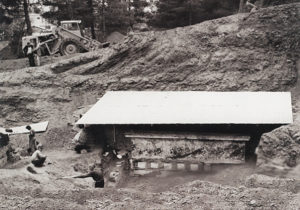
The roof and facade of the vaulted tomb emerging from the soil, October 1977. Grant (2019), p. 51
_____________________________
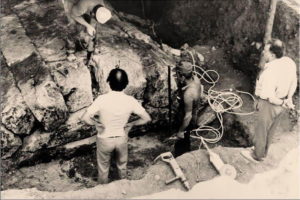
The keystone being removed from the vaulted roof of Tomb II. Grant (2019), p. 51
_____________________________
The Controversy of the Cluster
The vaulted structure (labeled ‘Tomb II’) resided in a cluster of four; Tomb I was a simpler cist grave which had already been looted in antiquity, but it was adorned with a haunting wall painting depicting the Abduction of Persephone. Immediately adjacent was the foundation of what appeared to be a shrine, suggesting the worship of an occupant. Unlooted Tomb III contained the bones of a male adolescent and was soon referred to as the ‘Tomb of the Prince’. The last structure, Tomb IV, lay in ruins apart from free-standing columns framing the entrance to the largest and deepest chamber of all at the very edge of the tumulus.
_________________________
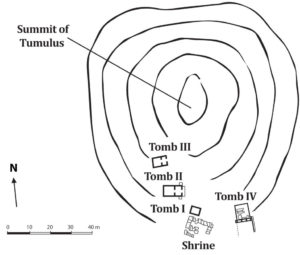
The relative positions of the tombs and shrine under the Great Tumulus. Grant (2019), p. 48
_________________________
In the opinion of the excavator, a chronology was being presented by this progression in tomb design, an observation which extended to the transitional architecture in the nearby ‘Tomb of Eurydice’ and even the Philippeion at Olympia.
In the main chamber of Tomb II, a fine gold ossuary chest held the cremated bones of a male, while a similar gold chest in the antechamber contained the cremated skeletal remains of a woman. Analysis indicated they were interred at the same time. This double burial hinted at unique historical circumstances, and the notion of forced or ritual suicide was voiced by commentators to explain their simultaneous interment.
The artifacts in Tombs II and III were visually dated to the mid-to-late fourth century BC, corroborated by pottery, ornate metalworking and the developed stage of the Macedonian vaulted tomb design. This dating spanned the reigns of Philip II (359-336 BC) and his son Alexander III, the ‘Great’ (336-323 BC), and the regal nature of the find was reinforced by the unique ‘Vergina Sun’ or ‘Star’ emblem of the Argead royal clan embossed on the lids of the two gold chests. The grouping of tombs was confidently dubbed ‘the cluster of Philip II’.
The discoveries at Vergina were first published in 1978. When referring to the tombs, Andronikos concluded they ‘belong to a time span which does not exceed that of one generation’. He added that ‘the date of all our finds was between 350 BC and, at the latest, 325 BC’, though he conceded they could stretch down to 310 BC, as that encompassed the murder of Alexander’s youngest son, potentially the ‘prince’ in Tomb III.
___________________________
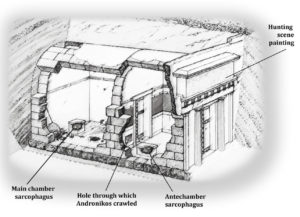
A cross-section of Tomb II. Grant (2019), p. 53.
___________________________
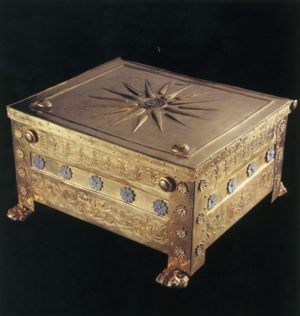
The gold larnax from the main chamber of Tomb II in which the bones were laid. Aristotle University of Thessaloniki – Vergina Excavation Archive. Grant (2019) color plate.
___________________________
The dating was both ‘fascinating and frightening’ to Andronikos. “From 359 BC to 336 BC … there was only one king in Macedon, Philip II … Alexander the Great, who succeeded Philip in 336 BC and reigned until 323 BC, was buried in Egypt. Thus, we are almost forced to the startling conclusion: if the deceased had been a king, he was Philip!” he concluded, with the exclamation mark. Andronikos logically went on to suggest, with a little too much haste, that the female in Tomb II was Philip’s last wife, Cleopatra.
When proffering the identifications, the excavator was not blind to his self-perpetuating logic in which the argument and conclusion were mutually justifying loops. “The sequence of thought I have followed, from the chronological framework 350–310 BC for the objects which cannot be challenged … leads us to the inevitable conclusion that Alexander buried his father in the great tomb after his murder in Aegae” in 336 BC. “From this we formulate the very useful conclusion that all the objects in the tomb [II] date to before 336 BC.” Andronikos was unrepentant about his ‘vicious circle of progression’ and added: “I believe that only by such a dialectical approach … can academic thinking move to its ultimate conclusions.” He did not foresee the backlash it was about to ferment.
The ‘Battle of the Bones’
Despite the labeling of the cluster, in the absence of tombstones, contemporary inscriptions or epitaphs, the excavator’s conclusions remained open to question. There began a thirty-year-long bitter ‘battle of bones’ waged through a series of academic papers designed to refute each other and challenge every assumption: the tomb occupants, their relative dating and ‘royalty’.
At the centre of the debate lay an ‘unfortunate symmetry’. When anthropologists first aged the Tomb II skeletal remains, it was determined that the male was 35-55 at death and the female aged 20-30. This permitted the notion that the occupants were either Philip II and his final far-younger bride Cleopatra who was executed with her baby daughter soon after his death by Alexander’s mother Olympias; or they were the skeletal remains of Philip’s half-witted son Arrhidaeus, who died twenty years later when of similar age and with an equally young bride. They were executed together by Olympias in her bid for survival in the post-Alexander world, which would explain the double burial in Tomb II.
____________________________
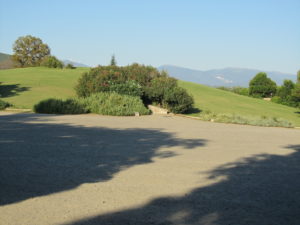
The entrance to the subterranean Archaeological Museum of Vergina. Grant (2019), color plate.
____________________________
Arguments for and against each pair revolved around wounds evident or invisible on the male bones when compared to the wounds Philip II received in battle; those famously listed in Demosthenes’ elegant oration On the Crown, for example. While some anthropologists claimed to see trauma, others argued the cracks and notches came from bone cracking in cremation. The tell-tale signs of a ‘flesh-burned’ cremation was presented as evidence of the immediate burning of the deceased, as opposed to the later ‘dry-boned’ burning of the already-long inhumed.
Besides bones, the hunting scene painted above the entrance to Tomb II, and even condiment pots found on the floor, were next proffered as dating witnesses. But it was always debatable whether the twenty years between the death of Philip II and his half-witted son Arrhidaeus could be discerned by purely visual interrogation of artifacts.
____________________________
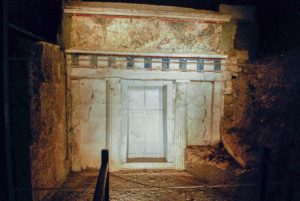
The facade of Tomb II showing the entrance doors and remains of the hunting scene frieze above. Grant (2019), color plate.
____________________________
Recurring questions filled academic papers: Did vaulted roofs exist in Greece in Philip’s reign, or were they developed later following eastern inspiration after Alexander’s campaigns? Was the hunting fresco, with its depiction of a lion in the quarry, inspired by the Persian game parks he and his men hunted in, because lions were surely extinct in Macedon by Philip’s reign?
Counter arguments pointed out that Persian artistic influences had appeared in Macedon since its occupation by Darius I’s advanced expedition forces in the late-6th century BC, and vaulted structures in Persia had been built by Greek stonemasons centuries before. In Macedon the lion was a symbol of kingship and had been depicted on coins for generations, moreover Herodotus claims lions attacked Xerxes’ camels in Macedon en route to his invasion of Greece.
_________________________
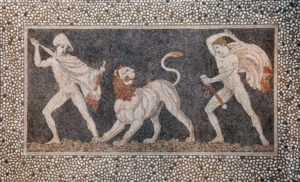
Lion-hunt mosaic found at Pella with similar dating to the tombs. Grant (2019), color plate.
_________________________
But a more fundamental challenge emerged to threaten the whole debate: the very identification of the ruins at Vergina with the ancient city Aegae was being called into question. Greek archaeologist Photius Petsas had a well-known and long-standing antagonism with Manolis Andronikos dating back to their student days and competing excavations. Petsas had been vocal on the ‘incorrect identification of Vergina’ issue since 1977, when a transcript of his interview on the topic was published in the New York Times.
Potentially more damaging to Andronikos’ reputation was a letter to an Athens newspaper on 13 February 1978 by Dr Zachos of the University of Paris. His correspondence alleged that when Andronikos announced he might have found the remains of Philip II he was following a political agenda: the ‘nationalism’ evoked by the discovery aimed at securing victory for Konstantine Karamanlis’ New Democracy party in the 20 November general election of 1977. What Zachos failed to remind his readers was that Andronikos’ public statement, which ‘armed the quiver of Hellenism’, took place on 24 November, four days after the vote.
Opposing views were supposed to have been embraced in the search for answers, but instead a caustic schism had developed which, in some cases, hark back to decades-old personal rivalries and political divides. ‘Archaeology is not a science, it’s a vendetta,’ was the rather-apt summation of Sir Mortimer Wheeler, the British archaeologist who died a year before Andronikos found Tomb II.
In 1987 the gloves finally came off in the ‘battle of the bones’ when historian Eugene Borza articulated a direct challenge to Andronikos over his identification of an elusive sceptre in his 1978 report. A sceptre, Borza claimed, would have been passed down through the generations of kings, as it was in the Iliad from the gods through Pelops, Atreaus, Aegisthos and on to Agamemnon the king of Mycenae. Similarly, an Argead sceptre would not have been buried with Philip II, but passed on to his son Alexander the Great, and, in turn, on to his successor Arrhidaeus who was made co-king at Babylon. Borza went on to argue that a sceptre could, however, have been interred with Arrhidaeus because he was the last male of Philip’s direct line.
In personal correspondence, Borza asked Andronikos to explain why references to the sceptre had disappeared from his later reports. Andronikos explained that he had been mistaken in the original identification. Borza remained suspicious and inferred that once Andronikos had realized the relic weakened his argument for Philip II, he spirited it away.
___________________________
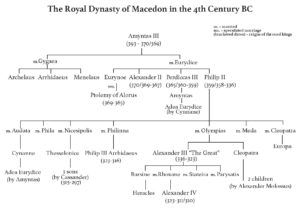
The royal line of Macedon in the 4th Century BC. Grant (2019), p. 76
___________________________
‘New Barbarians’ to the North
In 1991, while the ‘battle of the bones’ raged on, Yugoslavia dissolved and out of the fallout emerged a new socialist republic to Greece’s north. Its borders fell between Albania and Bulgaria in what would have occupied ancient Paeonia and western Thrace in the time of Philip II’s predecessors. Arguably a slither of ancient ‘Upper Macedonia’, the northern cantons annexed by Philip in his expanded realm, fell into the new state. Despite the questionable geopolitics, the new Republic of Macedonia immediately adopted a twelve-point Vergina starburst of the Argead kings to adorn its national flag. Blood ran hot in nationalistic veins from Athens to Thessaloniki.
Greece saw the republic’s name and its flag as national identity theft and demanded both be changed. Street protests followed on both sides of the border and airport names were changed in line with each nation’s cause. The new regime was duly recognized by the United Nations in 1993, but only under the title ‘Former Yugoslav Republic of Macedonia’ (‘FYROM’). Claiming ancient roots in the region under a tide of nationalism, FYROM accused its neighbor of stealing the biggest part of ‘Aegean Macedonia’ and incorporating it into northern Greece. The response from Athens was a blockade of the new Balkan player staking identity claims to the kings buried below Vergina.
The ancient Macedonians were Greeks, claimed domestic political commentators. ‘Our Philip and Alexander remain standard bearers of Greek culture and a Hellenistic Era when Greek culture spread to enlighten the known world’, the state newspapers reminded the world.
The stance remains somewhat ironic. Those born outside the borders of ancient Hellas were referred to wholesale as ‘barbaroi’, principally due to the noise of their harsh, discordant speech. The Peloponnesian War historian, Thucydides, who owned land in the Strymon River basin in the heartland of ancient Macedon, termed the ‘Upper’ Macedones ‘barbarians’ and contemporary Athenian orators like Demosthenes had hissed that the ‘Macedonians did not even make good slaves’. Moreover, the Macedonian army of Philip and his son smashed Greek power at the Battle of Chaeronea in 338 BC, thereby ending one-hundred-and-fifty-seven years of ‘democracy’ and Greece’s creative Classical Age.
Despite the enduring tomb uncertainties, by the time the Archaeological Museum of Vergina opened its doors to the public in 1997 under a reconstructed tumulus, the curators had no doubt about the labeling of the group: Tomb II was the resting place of King Philip II of Macedon, in the antechamber was probably his obscure Thracian wife Meda, while Tomb III did probably hold the bones of King Alexander IV, the murdered teenage son of Alexander the Great. The ‘official’ literature that followed was even more unequivocal on names, causing Eugene Borza to comment on one title: “The text is marred not only by the worst sort of nationalistic archaeology, but also by serious lapses in reasoning.” Yet these identifications ensured the museum was a commercial success, and this is how they remain today.
___________________________
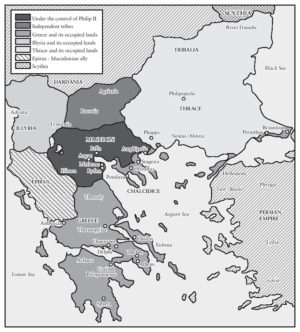
Ancient Macedon and its occupied territories in 359 BC at the beginning of the reign of Philip II. Grant (2019), p. 16.
___________________________
The Tomb II Stalemate
Historian Dr. Miltiades Hatzopoulos is an expert on ancient Macedon. Watching on as various teams of archaeologists and historians drew polarized conclusions, he issued his summation in 2008 of the ‘cottage industry of Verginana’, as he termed it: “It is true that the issue has been obscured by precipitate announcements, the quest for publicity, political agendas and petty rivalries, which have led to an inconclusive series of down-datings and up-datings, finally disqualifying all the ‘scientific’ criteria – including forensic medicine – invoked.”
By 2009, the ‘battle of the bones’ had reached a stalemate when academics ran out of debating ammunition. Recognizing the impasse for what it was, The American Journal of Archaeology even called for a moratorium on ‘Vergina papers’ until new evidence came to light.
New Methodology, New Momentum
The tides of politics always tugged at the Vergina excavations, and the lack of harmony between ministries responsible for antiquities resulted in a chronic lack of funding for tomb forensics. Responsibility for the excavations have always been divided between the University of Aristotle in Thessaloniki, and the Ministry of Culture which oversees sixteen other projects with a total budget of 32 million euros for museums, monuments and archaeological sites in the region of Emathia. Over 7 million euros of development capital for the subterranean Vergina museum had already arrived from EU Community programs. Sadly, none of it had been allocated to studies on the bones.
The tomb debate was finally given forward momentum in 2010 when an anthropological team led by Professor Theo Antikas and material scientists led by Dr. Yannis Maniatis, with a modest 6,000-euro grant from the Aristotle University, commenced a several-month task of cataloguing the Tomb II bones; their ground-breaking study would last five years.
Complicating the anthropological work was the methodology of earlier studies: preserving solutions of silicon-based polymers covered the bones, while resins and adhesives had been used in bone moulds. Alginate residues with plaster featured in a facial reconstruction of the male, all of which left some form of contamination.
_________________________

The jaw and facial bones of the Tomb II male. Grant (2019), p. 131.
_________________________
To effectively analyze and catalogue the Tomb II remains, the team applied CT scanning and then each bone was catalogued with a unique number, with entries on weight, condition and morphological changes such as color, warping or cracking. Any signs of foreign materials such as rare minerals were noted, along with comments on the conservation condition from previous handling. They next photographed each fragment from every anatomical plane, capturing over 4,000 images.
The anthropologists were able to determine the male suffered from a respiratory problem, a chronic condition that could have been pleurisy or tuberculosis, evidenced by the pathology they found on the inside surface of his ribs. Visible ‘wear and tear’ markers on his spine indicated he had experienced a life on horseback, while further age-related changes to the male skeleton which had not been brought to light before, allowed the Antikas team to narrow down the estimate of the Tomb II male to 45 +/– 4 years at death. They did however find a trauma on his hand which could finally correlate with one of the injuries Philip reportedly received in battle.
Under similar scrutiny, in 2014 they found new incontrovertible age evidence on previously unanalyzed female bones from the antechamber. Her pubic symphysis, a reliable aging marker, put her at 32 +/- 2 years at death, ruling out Philip’s older brides as well as his young final wife Cleopatra, and discounting Arrhidaeus’ teenage wife completely and him by association. Spinal markers made it clear she had also endured a life in the saddle.
The identity debate always had to accommodate an ‘intruder’ weapon: with the female rested a gold-encased Scythian ‘gorytos’ in the style of the hip-slung bow-and-arrow quivers of the formidable Scythian archers. Over 1,000 excavated graves in Ukraine and the Russian Steppes have proven the existence of these female warriors who were often buried with horses, weapons, tools and their typical jewelry: glass beads, earrings and necklaces of pearls, topaz, agate and amber, as well as bronze mirrors and distinctive bracelets.
_________________________
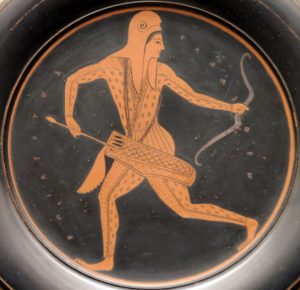
Scythian archer, beardless and so possibly female, on an Attic plate dated to 520 – 500 BC, showing the traditional hip-slung ‘gorytos’ and compound bow. Grant (2019), p. 71.
_________________________
Andronikos originally mused that the Tomb II woman had ‘Amazonian leanings.’ Others were more skeptical of the ‘weaponized warrioress’ association. In what might be considered a case of archaeological gender bias, the subterranean Archaeological Museum of Vergina displays the statement: ‘Weapons were for men what jewels were for women’, despite the fact that no jewelry was found with the Tomb II female, apart from a sumptuous diadem and an austere Illyrian-type pin. The curators believed the quiver, greaves and spears in her chamber were not hers at all, but belonged to the ‘king’ next door, as their upright position against the dividing door could suggest.
The Antikas team put an end to that theory in another ‘eureka moment’ in 2014. They identified a previously overlooked shinbone fracture which had shortened her left leg. This was finally proof that the armor and weapons in the Tomb II antechamber belonged to her, because one of the gilded-bronze greaves in her chamber was 3.5 cm shorter and also narrower than the other and had obviously been fashioned to fit to her deformity.
__________________________
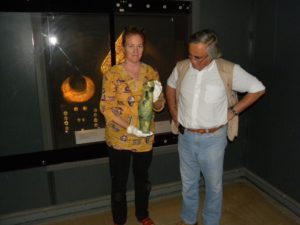
Professor Theodore Antikas with Laura-Wynn Antikas holding the shorter greave in front of the display cabinet in the Archaeological Museum of Vergina. Antikas team archive. Grant (2019), color.
__________________________
When compared to the three sets of same-sized greaves found in the male chamber next door, they had always looked rather feminine in proportion; she had indeed been honored as a warrior. If the tomb contents were redolent of the life and career of the chamber occupants, as commentators were inclined to believe, then this further narrowed down the list to females recorded as showing martial or pugnacious persuasions.
At one point, Philip II allied with a Danube-region Scythian king, Atheas, who resorted to adopting the Macedonian king to seal the treaty. So a daughter, given freely or captured after battle when relations broke down, might have become a final wife or captive concubine who was interred in Tomb II, explaining the presence of the quiver. But a Scythian daughter was never mentioned in the sources.
Neither were the Scythians renowned as metal smiths; the exquisite jewelry in their graves is of local Greek workmanship, likely from Panticapaeum in the Kingdom of Bosporus by today’s Crimea. But there was also a thriving metalworking industry in Macedon, where weapons and armor were fashioned for Philip II. The possible domestic manufacture of what could have included ornate goods for export to Scythian warlords in this unique era of diplomacy means the ‘Amazon’ of Vergina could have been born rather closer to home.
Problems with Provenancing Gold
Several more quivers have been found in Scythian regions with almost identical patterns beaten into the gold and they might be traceable to a single Greek workshop and artisan. Unfortunately, it remains troublesome to prove the provenance of gold ore from its ‘signature impurities’ such as platinum group elements. Many artifacts of the period were in fact made from electrum with a high silver and trace copper content. But the analysis of electrum is complicated when craftsmen ‘enhanced’ it by ‘whitening’ with added silver, or ‘reddening’ it with increased copper, after the separation process known as ‘cupellation’ from the base ore.
_________________________
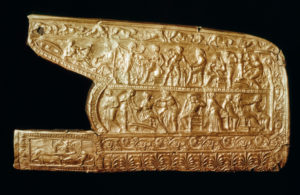
Scythian gold-encased bow-and-arrow quiver found at Chertomylk, Ukraine. The overall layout and position of images is remarkably similar to the Vergina Tomb II example. The mounting of a gold ‘gorytos’, Scythian, Russia, 6th-4th century BC. Artist: Werner Forman. Grant (2019), p. 215.
_________________________
There also remains an unspoken ‘elephant in the room’: there is no mention in texts of any wife being buried with Philip II at Aegae, and if Andronikos was correct, inconsistencies in the dimensions of the vaults of the two chambers forming Tomb II suggest they were built or completed in different stages. The male and female were not necessarily cremated together or even at the same time; the different color of her unwashed bones reinforces that.
The Tomb I Bombshell
A further discovery had already put an end to one tenacious but erroneous avenue of the identity debate which misdirected scholars for decades. In 2014, forgotten and unanalyzed skeletal remains from Tomb I were found in storage below the Vergina laboratory; they were probably consigned to thirty-five years of obscurity in the aftermath of the ‘great’ Thessalonica earthquake of 20 June 1978 when the preservation of unlooted Tombs II and III was the focus of attention.
These additional Tomb I bones meant that the remains of at least seven individuals were identifiable, not only a male, female and a baby as one anthropologist had previously concluded from the few fragments he briefly saw; that had led to the notion that Philip II, Cleopatra and their executed infant were actually interred there and not in Tomb II, where, logic suggested Arrhidaeus and wife were interred.
‘Amphipolitics’
Greek nationalism and a renewed interest in Macedon’s archaic past were heightened when archaeologists made their first entry into the massive tomb structure at Amphipolis in the summer of 2014. The Casta Hill tomb lay inside a 155-meter high mound surrounded by a 500-meter perimeter wall which lay outside Amphipolis’ once fortified city walls.
On 12 August 2014, as excavators prepared to go in, the Greek Minister for Culture and Sports enthusiastically exclaimed: “We have been waiting for this tomb for 2,300 years.” The Prime Minister, Antonis Samaras, hurried to the site with TV cameras in tow and promised that the dig in the “land of our Macedonia would be completed within a couple of days”. The Bishop of Thessaloniki promptly added: “Whoever may be buried inside the tomb, he is bound to be Greek.” These were deliberate slights to the parliament of the Slavic Macedonia in Skopje. ‘Amphipolitics’ was hitting the news and conveniently diverting the country’s attention from rising unemployment and Greece’s European Union bailout program which was supposed to end that year.
_______________________
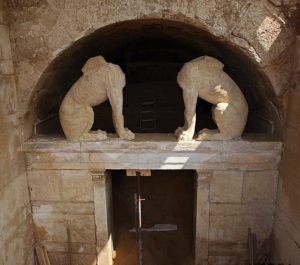
The entrance of the Casta Hill tomb at Amphipolis guarded by marble sphinxes. Amphipolis, Greece. 25th Aug, 2014. Two battered marble sphinxes are seen under a barrel-vault topping the entrance to a late 4th Century B.C. tomb under excavation at Amphipolis in northern Greece. Archaeologists excavating the large grave mound have partially investigated the interior of the underground tomb which appears to have lacked a door in the doorway under the sphinxes. But it seems most likely that the tomb was plundered in antiquity. © Aristidis Vafeiadakis/ZUMA Wire/Alamy Live News. Grant (2019), color plate.
_______________________
‘Final Solution’ Forensics
But the ongoing Vergina controversy extended beyond the Tomb II bones. Two extremely large fused-together leg bones, which supposedly originated in Tomb I, made their way to the bone collection during a study by a Greek paleoanthropologist published in 2015. Dr Antonis Bartsiokas allegedly found them amongst the Tomb I skeletal fragments, even though they were absent from the original excavator’s report. The awkwardly angled knee bones, he argued, were ‘proof’ of the terrible wound Philip may have suffered in Thrace resulting in his well-documented limp. But on closer inspection they appeared to be ‘intruders’; Professor Xirotiris, who had worked with Andronikos when the tombs first emerged, publicly stated that he doubted the Bartsiokas-presented bones came from Tomb I, with all the implications that carried.
The ground-breaking finds of the Antikas-Maniatis teams were finally published in an academic journal in 2015. Microscopic forensics had identified textile stains on the cremated remains, while melted gold was seen on the cremated upper vertebrae of the male. Within a composite material found clinging to the male bones, the rare white mineral huntite and Tyrian Purple were bound in layers with egg white and clay, suggesting an undocumented Orphic funeral rite involved a striking ceremonial face mask, or posthumous death mask, redolent of the gold example from Mycenae termed the ‘Mask of Agamemnon’.
____________________________
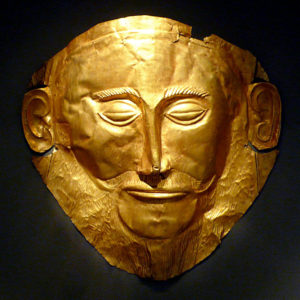
The so-called ‘Mask of Agamemnon’ found at Mycenae. National Archaeological Museum of Athens. Grant (2019), color plate.
____________________________
The melted gold droplets begged the question of whether the ‘king’ was initially wearing his wreath as flames licked the funeral pyre, because the incomplete gold wreath found inside the ossuary chest showed signs of intense heat and lacked the pieces found in the pyre remains on the tomb roof. An ivory-and-glass-decorated ceremonial shield also showed signs of exposure to fire. It appears the dead king was presented to the onlookers ‘battle ready’ in his finery as the fire began cleansing his corpse, before being whipped away for interment below with his later-collected and washed bones.
Although hampered by underfunding and a lack of support from the Ministry of Culture, the teams continued to push for ‘next-generation’ forensics: DNA testing, radiocarbon dating, and stable isotope analysis of the bones from unlooted Tombs II and III. DNA could reveal any genetic family relationships, C14 dating of the bones would be a cross-check to the age of the tombs, and strontium isotope signatures might reveal where the occupants spent their early years.
The Ministry of Culture denied permission in 2016. Instead, the scientists were allowed to test the scattered bones found in looted Tomb I and a nearby ‘hidden’ grave near the city agora, possibly the secret burial site of Alexander’s murdered teenage son Heracles. But no formal funding was provided. Although the Tomb I bones lay exposed in soil for over two millennia at various levels, meaning it was difficult to establish who the original tomb occupants were, dating evidence and DNA results were successfully extracted, against all expectations, blowing apart yet more of the old identity theories.
The ‘Speaking Papyrus’
More recently, in 2017, Professor Richard Janko, one of the world’s leading papyrologists was able to identify letters on reassembled papyrus fragments from Tombs II and III. On a Tomb II fragment the letter Sigma was written in an older style symbol more consistent with the reign of Philip II, whereas on a fragment from Tomb III the same letter had developed into what is known as a ‘lunate C’; it appeared to be part of a list of chattels and tools for construction of funerary furniture, thus contemporary with the sealing of the tomb. The development of the Sigma argued that the Tomb III papyrus was written some years since the sealing of Tomb II, undermining the notion that Arrhidaeus was buried there.
What had become clear from the work of the material scientists was that an analysis of all contents of the tombs was required to piece together the identity puzzle, besides the skeletal remains and precious artifacts. The remains of wood, leather and potentially more papyrus still sits in storage with a semi-decomposed mass of as-yet unanalyzed material from the floors of the chambers.
With the possible candidates greatly narrowed down by the recent studies, further forensic analysis on the bones of the ‘king’, ‘queen’ and ‘prince’ might solve the identity puzzle once and for all. That is, if the Greek Ministry of Culture is prepared to let science challenge the name plaques at Vergina.
_______________________
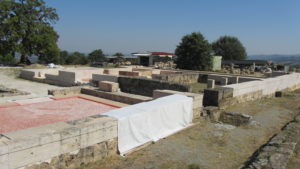
The palace at Vergina undergoing reconstruction work, 2018. Photo by David Grant.
_______________________
Editor’s Supplement: The Treasures of Vergina
A Pictorial
The following represents a sampling of the remarkable finds from the excavations at Vergina, as currently exhibited to the public.

Tomb entrance. MegAlexandrou, CC-BY-SA 4.0, Wikimedia Commons
_______________________
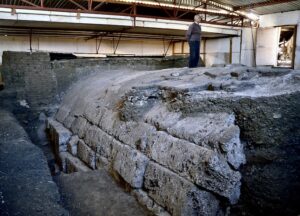
Tomb II (“Tomb of Philip II”) at Vergina. Back of facade and exterior of barrel vault with remains of funeral pyre. Mark Landon / Wikimedia Commons / CC BY 4.0
_______________________
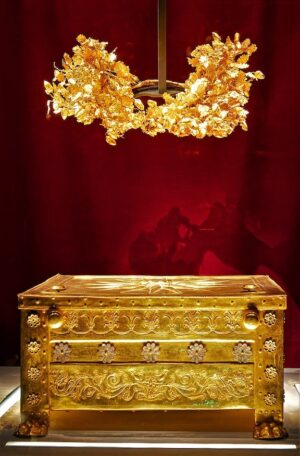
The Golden Larnax (Chrysi Larnaka) (with the Sun of Vergina on the lid) that contains the remains (bones) from the burial of King Philip II of Macedon and the royal golden wreath. Holger Uwe Schmitt, CC-BY-SA 4.0, Wikimedia Commons
_______________________
_______________________
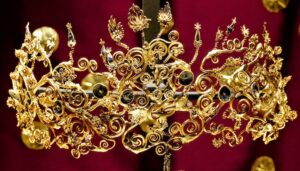
Queen Meda’s Gold Myrtle Wreath from the antechamber of tomb of Philip II of Macedon Aigai Vergina 336 BC. Holger Uwe Schmitt, CC-BY-SA 4.0, Wikimedia Commons
_______________________
_______________________
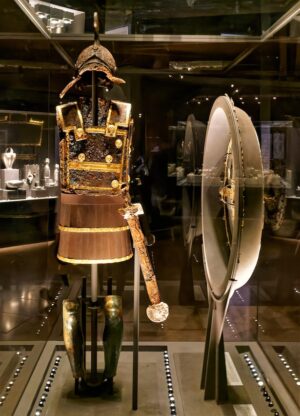
Royal armor of Philip II. Holger Uwe Schmitt, CC-BY-SA 4.0, Wikimedia Commons
_______________________
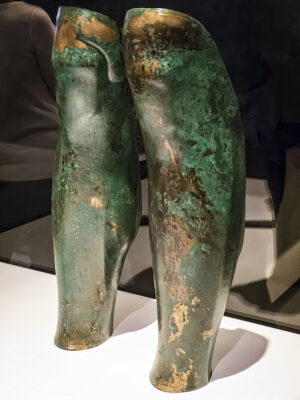
Bronze greaves (Leg Guards) from the tomb of Philip II of Macedon 4th century BCE Aigai, Vergina Greece. These pieces of armor were custom made for Philip II as he suffered a broken tibia, leaving one of his legs deformed. Mary Harrsch, CC-BY-SA 4.0, Wikimedia Commons
_______________________
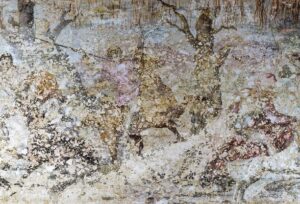
Detail of wall painting in the Royal Tomb at Vergina. Holger Uwe Schmitt, CC-BY-SA 4.0, Wikimedia Commons
_______________________
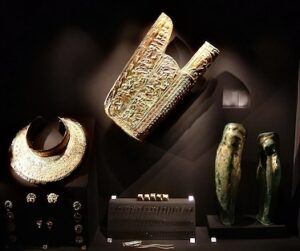
The gold gorytos (combination quiver and bow case), shin-guards and neck armor of female in unlooted 4th Century BCE tomb of Philip II Vergina, Greece thought to be Queen Meda of Odessos, Philip II’s sixth wife, a Thracian princess who hurled herself onto Philip’s funeral pyre. David Grant, Public Domain, Wikimedia Commons
_______________________
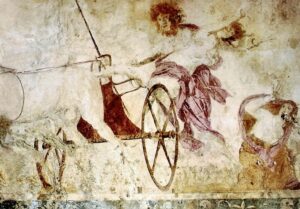
Hades abducting Persephone, fresco in the small royal tomb at Vergina, Macedonia, Greece. Yann Forget, Public Domain, Wikimedia Commons
_______________________
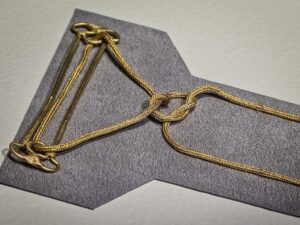
Gold two-pin fibula with housing and chain tied in a Herakles tomb of Philip II Macedon Aigai Vergina Greece 336 BCE. Mary Harrsch, CC-BY-SA 4.0, Wikimedia Commons
_______________________
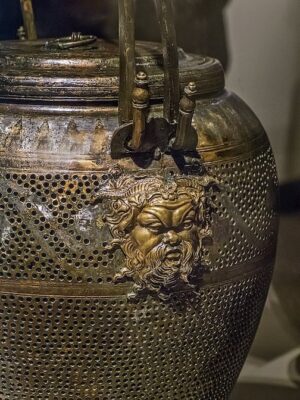
Bronze Lychnouchos (lantern) with Pan relief from the tomb of Philip II of Macedon in Aigai 336 BCE. This ornate bronze lantern housing a black-glazed terracotta lamp illustrates the originality and sophistication of the metal workshops of the ancient Macedonian court. The relief masks representing the god Pan and the decoration of the ivy leaf suggest that this lantern was used during royal symposia. Mary Harrsch, CC-BY-SA 4.0, Wikimedia Commons
_______________________
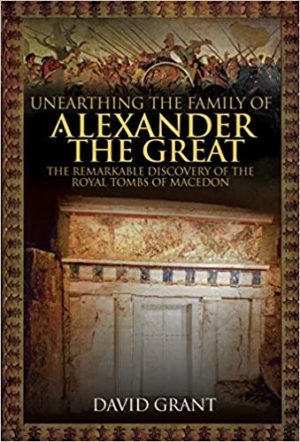 David Grant, the author of this article, has been collaborating with anthropologists in Greece to identify the ‘mystery Amazon of Macedon’. His new book, Unearthing the Family of Alexander the Great, the Remarkable Discovery of the Royal Tombs of Macedon, is available from Amazon and other online retailers.
David Grant, the author of this article, has been collaborating with anthropologists in Greece to identify the ‘mystery Amazon of Macedon’. His new book, Unearthing the Family of Alexander the Great, the Remarkable Discovery of the Royal Tombs of Macedon, is available from Amazon and other online retailers.
_______________________
Advertisement
____________________________
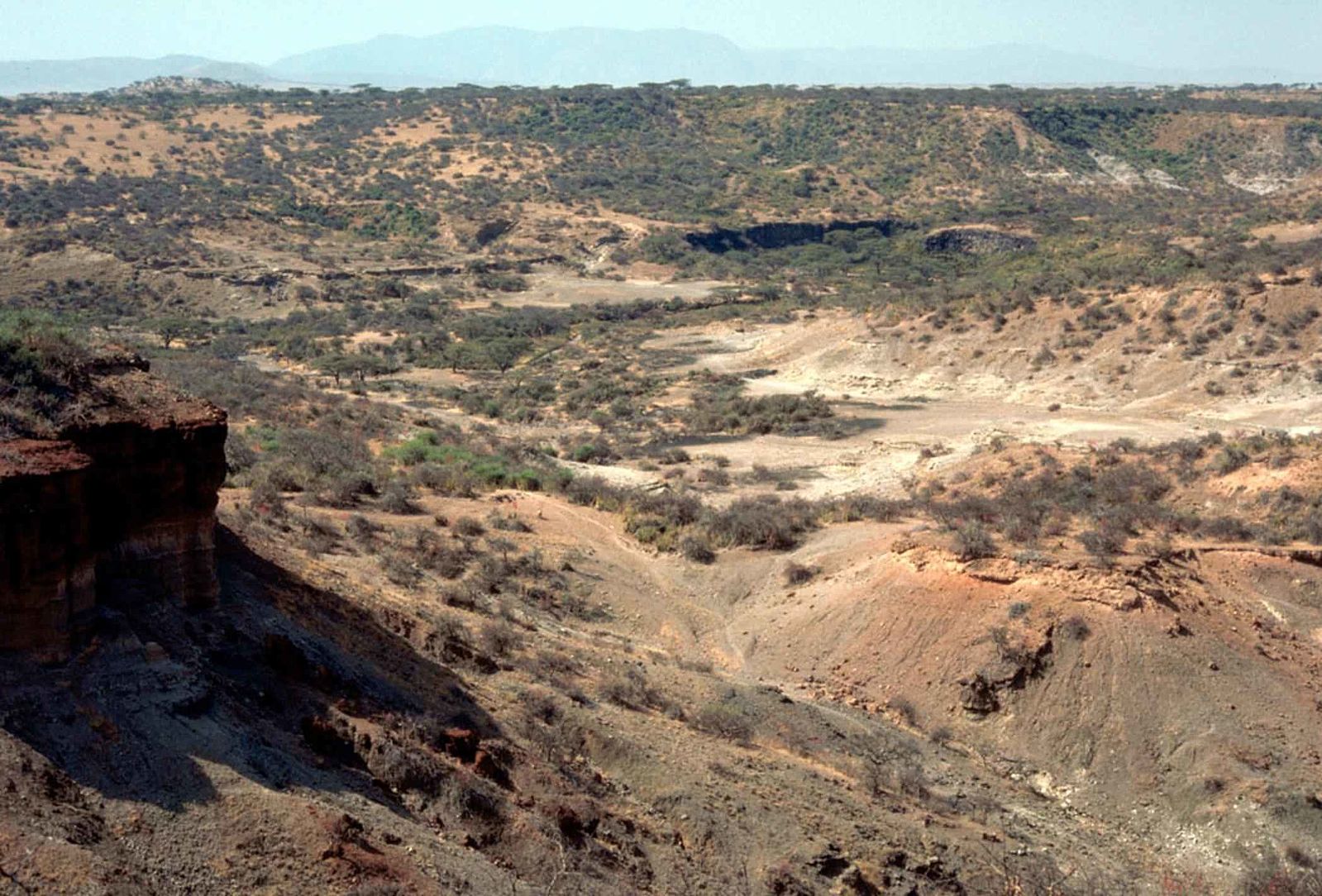
























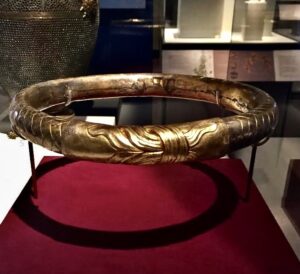

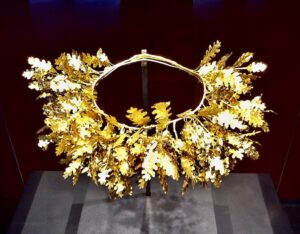







 David Grant, the author of this article, has been collaborating with anthropologists in Greece to identify the ‘mystery Amazon of Macedon’. His new book,
David Grant, the author of this article, has been collaborating with anthropologists in Greece to identify the ‘mystery Amazon of Macedon’. His new book, 
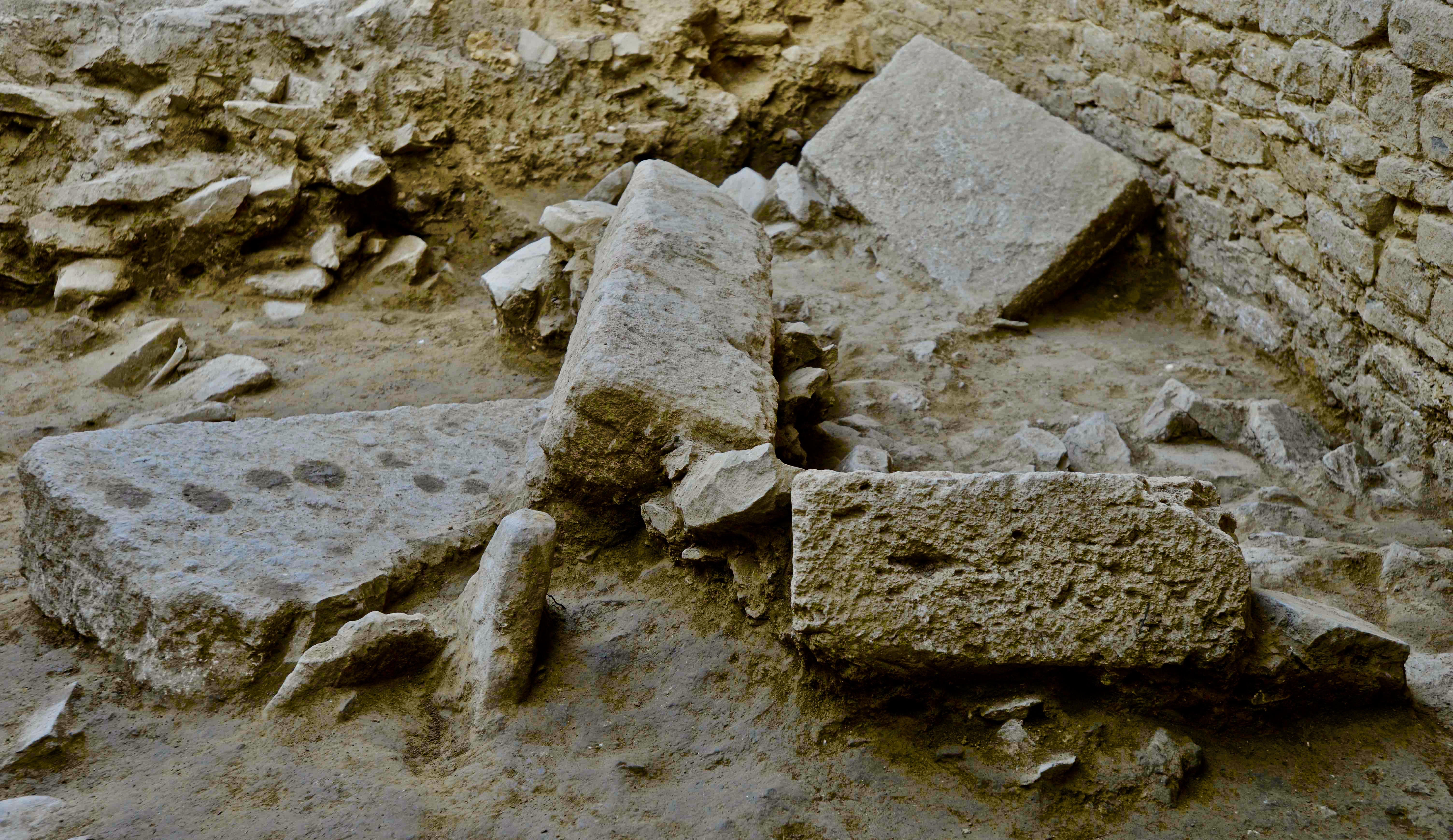
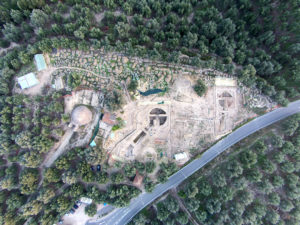
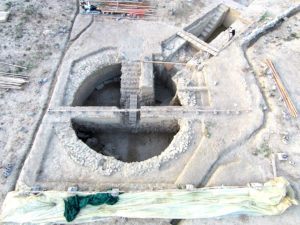
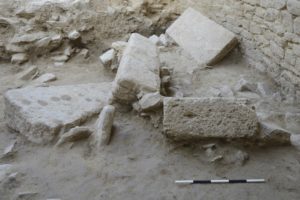

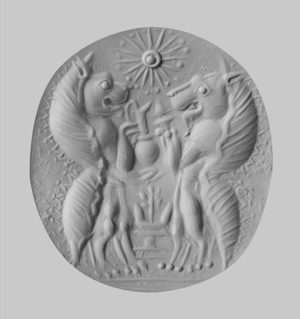
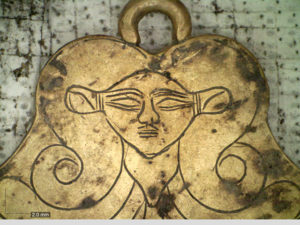
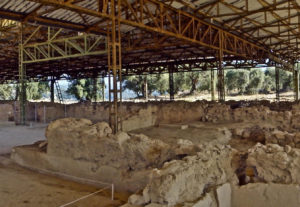
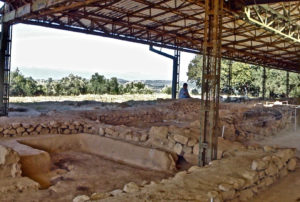
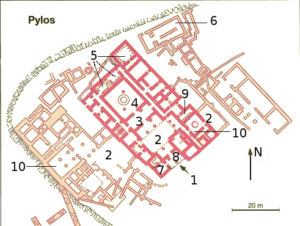
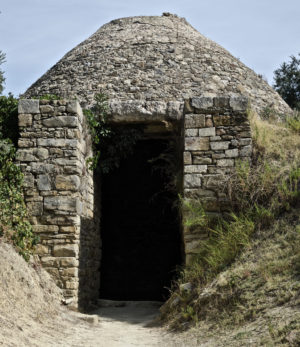
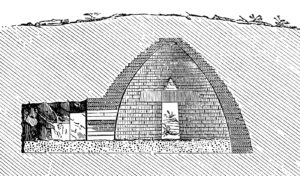
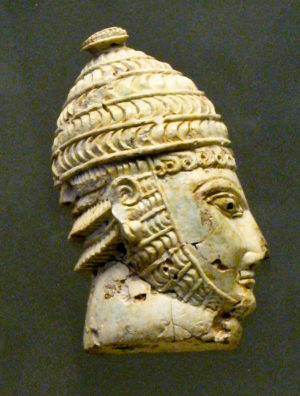

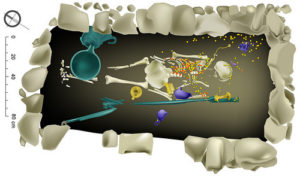
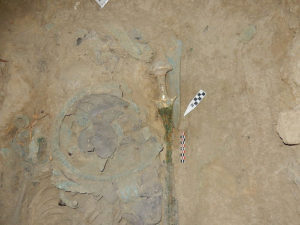
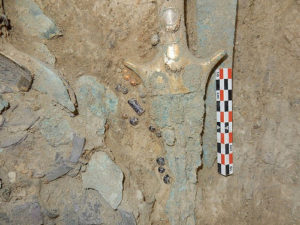
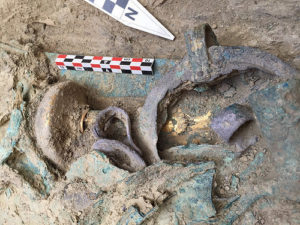
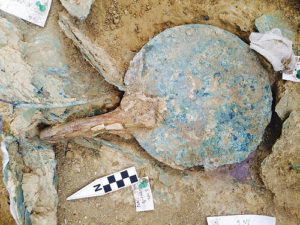
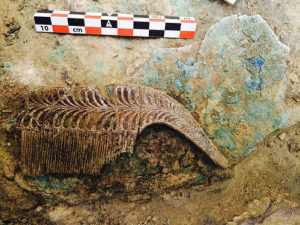
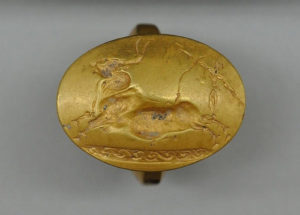
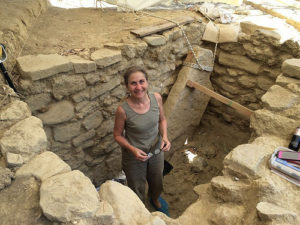
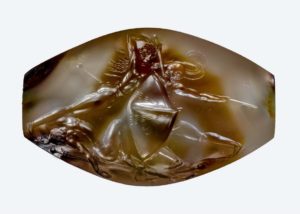
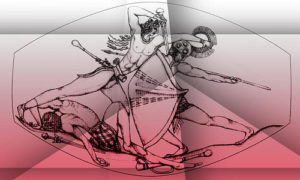
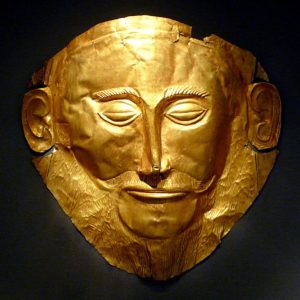
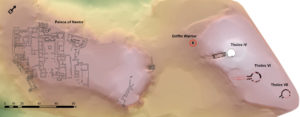


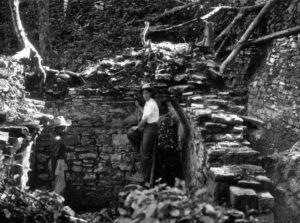
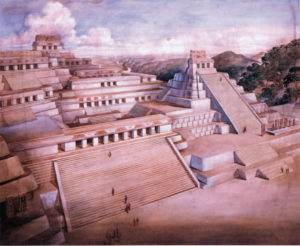
 Tatiana’s finding was a game-changer for understanding the Maya. “In Tatiana’s day, people believed Maya cities weren’t really cities,” says Simon Martin, currently Associate Curator and Keeper of Collections in the American Section of the Penn Museum. “They were [considered to be] ceremonial centers ruled by priests. It was thought that the population didn’t live in the centers. They were scattered around in the forest, and they might have just gathered together [in the centers] for ceremonies and rituals.” Martin points to a key monument designated as “Stela 14”, now housed and on display in the Museum’s newly opened Mexico and Central America Gallery. It once resided with 39 other stelae at Piedras Negras. “The figures on Stela 14 were originally thought to be a god and then [depicted] down below a priest, who is making offerings toward her [see image right]” But at Piedras Negras, says Martin, “Tatiana started working on chronology and the relationship between particular dates and particular images on the monuments”. Referring to Stela 14, Martin says that Tatiana was able to recognize or identify a glyph inscribed with a series or column of glyphs on the side of the stela as an “event glyph”, which signified the occurrence of a very significant event in the Maya chronology of the site. “She hypothesized that this event glyph referred to someone becoming a king, which turned out to be completely correct. Thanks to Tatiana’s work, we realize that the seated figure is a king, and the one standing below is a queen.” Many Maya hieroglyphs, it turned out, were actually a record of the kings and queens and the associated events of their times. And more than that, Tatiana’s work was ultimately a key to deciphering the Maya script, something that had eluded scientists and scholars for years. Stela 14, and the other stelae discovered and studied at Piedras Negras, acted like a ‘Rosetta Stone’ for translating ancient Maya history and culture.
Tatiana’s finding was a game-changer for understanding the Maya. “In Tatiana’s day, people believed Maya cities weren’t really cities,” says Simon Martin, currently Associate Curator and Keeper of Collections in the American Section of the Penn Museum. “They were [considered to be] ceremonial centers ruled by priests. It was thought that the population didn’t live in the centers. They were scattered around in the forest, and they might have just gathered together [in the centers] for ceremonies and rituals.” Martin points to a key monument designated as “Stela 14”, now housed and on display in the Museum’s newly opened Mexico and Central America Gallery. It once resided with 39 other stelae at Piedras Negras. “The figures on Stela 14 were originally thought to be a god and then [depicted] down below a priest, who is making offerings toward her [see image right]” But at Piedras Negras, says Martin, “Tatiana started working on chronology and the relationship between particular dates and particular images on the monuments”. Referring to Stela 14, Martin says that Tatiana was able to recognize or identify a glyph inscribed with a series or column of glyphs on the side of the stela as an “event glyph”, which signified the occurrence of a very significant event in the Maya chronology of the site. “She hypothesized that this event glyph referred to someone becoming a king, which turned out to be completely correct. Thanks to Tatiana’s work, we realize that the seated figure is a king, and the one standing below is a queen.” Many Maya hieroglyphs, it turned out, were actually a record of the kings and queens and the associated events of their times. And more than that, Tatiana’s work was ultimately a key to deciphering the Maya script, something that had eluded scientists and scholars for years. Stela 14, and the other stelae discovered and studied at Piedras Negras, acted like a ‘Rosetta Stone’ for translating ancient Maya history and culture.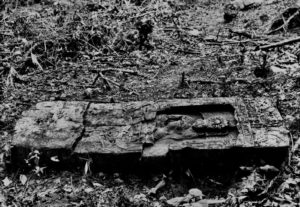
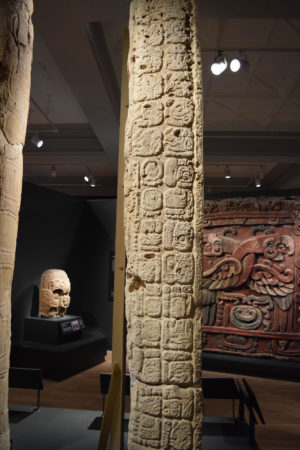

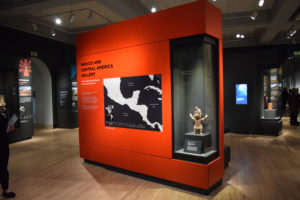
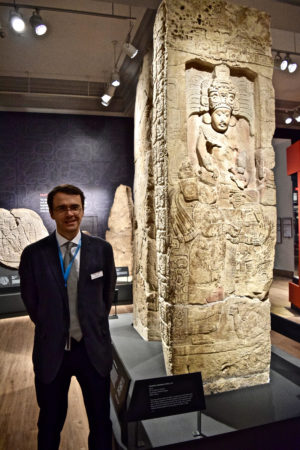
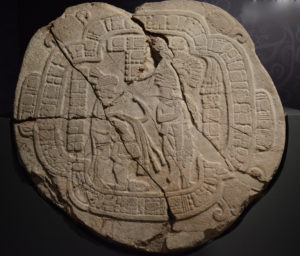
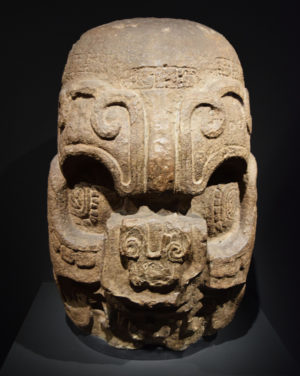
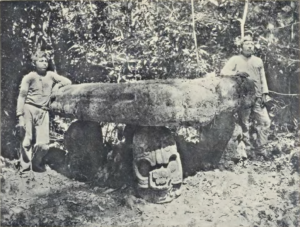
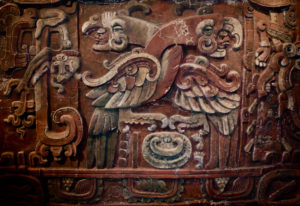
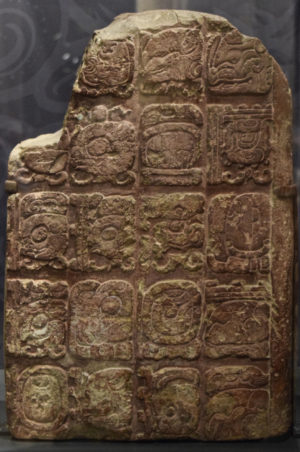
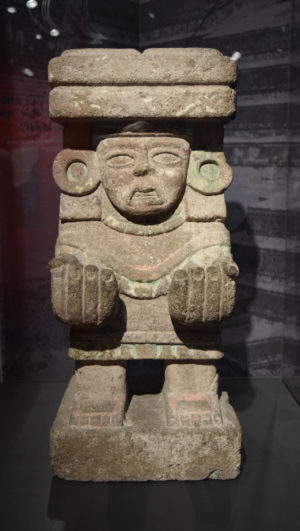
 The Penn Museum (the University of Pennsylvania Museum of Archaeology and Anthropology) is dedicated to the study and understanding of human history and diversity. Founded in 1887, the Museum has sent more than 300 archaeological and anthropological expeditions to all the inhabited continents of the world. With an active exhibition schedule and educational programming for children and adults, the Museum offers the public an opportunity to share in the ongoing discovery of humankind’s collective heritage.
The Penn Museum (the University of Pennsylvania Museum of Archaeology and Anthropology) is dedicated to the study and understanding of human history and diversity. Founded in 1887, the Museum has sent more than 300 archaeological and anthropological expeditions to all the inhabited continents of the world. With an active exhibition schedule and educational programming for children and adults, the Museum offers the public an opportunity to share in the ongoing discovery of humankind’s collective heritage.


